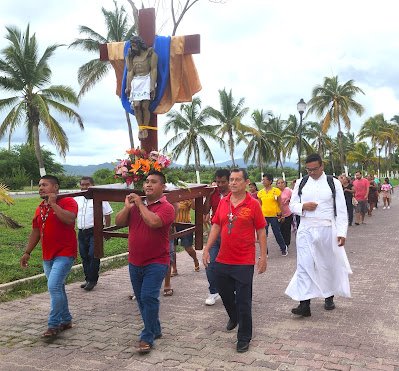There are very few circumstances that can interrupt my morning walk routine. But this is one of them.
Even though tropical storm/hurricane Orlene did not even give us a buss on the cheek with its whirling dervish system, it pulled in other weather systems over us that have given us the weather equivalent of an NBA makeup call. This has been a relatively dry wet season. Not now.
Orlene passed us by far out at sea, but it has sucked in plenty of rain clouds that were more than happy to make up our deficit. And then some.
As I write, Orelene is poised to make landfall in Mazatlan like a stir-crazy tourist careering off of seven straight days of seas days on a cruise ship. I wish them well.
Even tough it is that far north, the rains here continue. The photograph is the street in front of my house. Whenever we get heavy rains, there is only so much water that the parched sand can absorb. The rest seeks the closest way back to the ocean. And my street is a convenient conduit. If I need to go anywhere, I will ford the stream in my car.
Rains like this are not infrequent in the summer. But the stream in front of my house always reminds me of the old spiritual "Peace Like a River." I am certain you know it. "I've got peace like a river/Peace like a river/Peace like a river in my soul."
My religious tradition is based on upbeat, joyful songs like that. I suspect that is the reason I am a bit turned off by some of the depressing downbeat minor key hymns that are so popular in certain churches. Not only are they not part of my tradition; they simply do not convey the spirit of my faith. As the third verse of that song says: "I've got joy like a river in my soul."
You may have already guessed that my Alaska flight on Saturday (here we go again -- or not) did not attempt to fly through the barrier of the hurricane that stood between Manzanillo and Los Angeles. The flight has been postponed until 8 PM today. I suspect the late time is to ensure that Orlene has hit shore and started to break up.
So, I will be on my way to Los Angeles this evening -- if, as they say, "the creek don't rise."
If all goes well, and there is a break in the weather, I may have time to catch up on my lost morning steps.
Because some things should flow like a river.




.jpg)










.jpg)




































